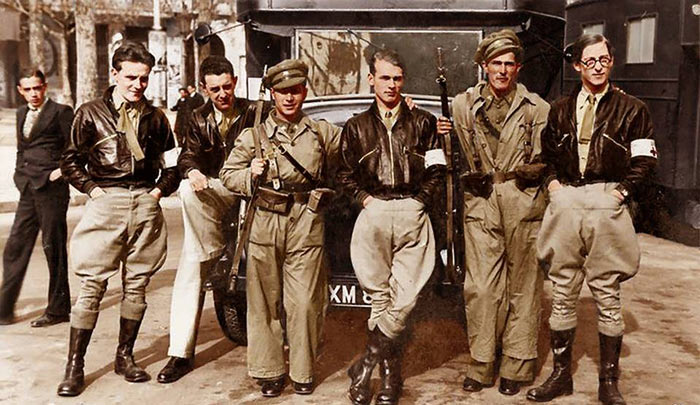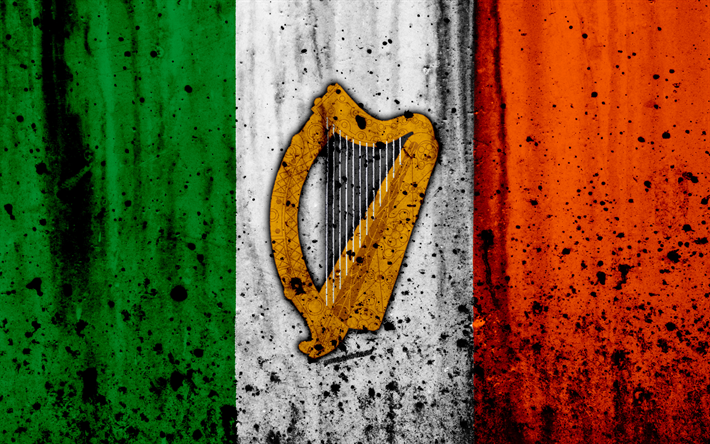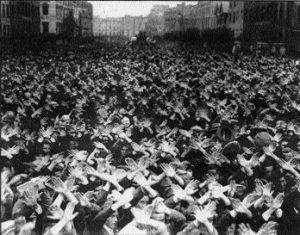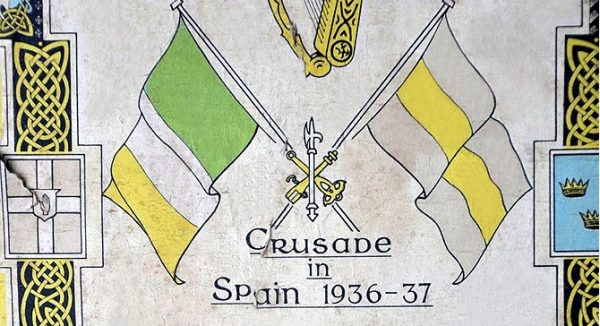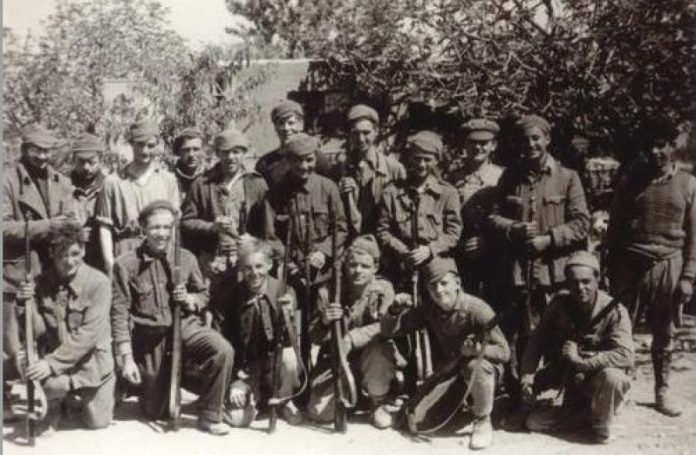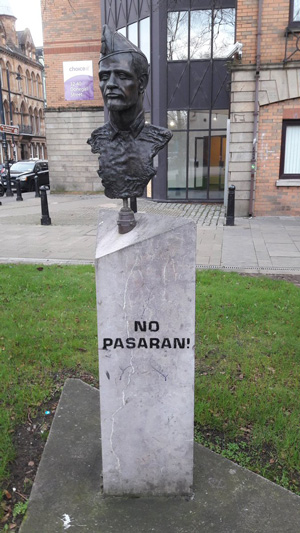The Spanish Civil War was a conflict that indirectly involved many nations. Prelude to the Second World War, the hispanic conflict picked up the hatreds and policies sown in Europe for decades. The division in the face of the conflict was not only in blocks of countries, but within them, society had different points of view. Ireland is a curious case in this regard.
Read this post in Spanish HERE
Situation of Ireland at the beginning of the 20th century
In 1916, at the height of First World War, a small group of Irish nationalists rebelled in Dublin in what became known as the Easter Rising, however they were reduced and their leaders executed, which only increased sympathy for the movement. The 1918 elections to the British Parliament gave the nationalist Sinn Féin party 73 deputies of the 105 corresponding to Ireland, but these refused to march to London and met in Dublin, proclaiming the Republic of Ireland. Both sides, nationalists and unionists, waged a violent civil war. In 1921 a ceasefire was agreed and the island was divided, based on several treaties: Northern Ireland, part of the United Kingdom and with representation in the English Parliament, and the Irish Free State that would suffer several internal conflicts until it reached the which we know today as the Republic of Ireland.
We must remember the secular confrontation between the Irish and the British, whose main origin was in the differentiation between Catholics (Irish Nationalists) and Protestants (British Loyalists). The origin of this conflict in the 16th century lasted until the 20th century, generating the famous Troubles. Even today, although religious differences are not particularly relevant, the socio-political tension between the two communities is palpable.
Ireland’s position on the July 17 uprising
The hard process of democratic constitution of the Irish Free State provoked the sympathy of the new nation towards the proclamation of the Spanish Republic in 1931. However, this joy and support did not last long as soon as it was known that the secular program of the Spanish Republic was damaging the Catholic Church. We must understand that, despite its revolutionary and worker air, Ireland had Catholicism as the fundamental flag of its identity, since it had resisted for centuries the English Protestant pressures.
The Irish government declared its neutrality in the face of the Spanish war, but on a the popular level the nation positioned itself alongside the rebels, the spanish nationalists. A wave of indignation swept the island when the persecutions and executions of Catholics on the Republican side became known. Demonstrations in support of the spanish national side were organized in the main cities of Ireland and in the parishes, collections organized by the Church and the Irish Christian Front were carried out for the sending of civil aid and medical assistance.
At this time when Europe was experiencing a rise of the new fascist ideology, no country was spared from having a group that defended the ideas that emerged in Italy in the previous decade. Neither the United Kingdom, with Edward Mosley at the head, nor Ireland got rid of them. On the Emerald Isle the quintessential fascist group was the National Corporate Party (NCP), the Green Shirts, founded by Eoin O’Duffi in 1935. Their goal was to found a corporate and anti-communist republic in Ireland. Although it was not very successful, its short-lived role in the Spanish Civil War stands out.
The Irish Brigade
O’Duffin harangued his party comrades to come to Franco‘s support and confront Communist troops who threatened Christendom. In August 1936 he made an appeal through the Irish Independent asking for volunteers to form a brigade and go to fight «alongside the Christian forces» in the Spanish War. O’Duffin himself led the 700 volunteers who arrived in Spain at the end of the year and joined the Foreign Legion, forming the XV Flag. Their role on Spanish soil would not be very relevant and they even suffered several setbacks during the actions they undertook.
They fought in the battle of Jarama, but during the combat they were confused by members of the Republican International Brigades and suffered several casualties. They also fought in Guadalajara, where they carried out a failed diversionary operation. But what most detracted the morale of the volunteers was the constant absences of their boss, since O’Duffin seems to have taken advantage of the trip to Spain to visit several cities and get more drunk than usual. Due to internal discontent and the poor operational capacity shown, Franco dissolved the brigade in April 1937 and the Irish returned to their country.
The Connolly Column
Although the population of Ireland in general supported the rebellious side, there were also sectors that supported the spanish Popular Front. O’Duffin’s appeal not only moved the volunteers who followed him, but also had their reaction among his political opponents. The Communist Party of Ireland and the IRA, in turn, made another call to fight in the War of Spain, but this time encouraging the Irish to support the Spanish Republic by joining the International Brigades. While the members of the Irish Brigade came from towns and villages, the bulk of what became known as the Connolly Column consisted of workers from the island’s large cities. About 200 Irish, most of them members of the IRA or the Communist Party, arrived in Spain at the end of 1936. They joined the Lincoln Battalion and the British Battalion, both belonging to the XV International Brigade.
Despite their enthusiasm to fight fascism, problems soon began to arise. The Spanish Popular Front was markedly anti-clerical, while many of the Irish maintained their Catholic fervor, a flag they had flown for centuries. This caused friction, since they were not allowed to practice their religion and customs even when they were not at the front. Like their compatriots on the national side, the Irish brigadistas participated in the battle of Jarama and also in those of Brunete, Teruel and the Ebro. Those who were taken prisoner were transferred to a concentration camp until the end of the war, after which were released and repatriated.
Their memory
Despite their poor role in the war, O’Duffin‘s volunteers were greeted as heroes in their homeland, while Connelly’s Irish brigadiers did not get such a reception, they were even despised by the majority of Irish. After the Second World War and up to the present the situation has taken a total turn. Today O’Duffin‘s participation is barely remembered, on the other hand, the Irish who participated together with the International Brigades have numerous monuments that remind them of both the Republic of Ireland and Northern Ireland.
References
Stradling, R. A. (2001) [1996]. «Campo de batalla de las reputaciones: Irlanda y la Guerra Civil Española». En Paul Preston, ed. La República asediada. Hostilidad internacional y conflictos internos durante la Guerra Civil, Barcelona: Ediciones Península, pp. 185-224.
Fearghal McGarry, Irish Politics and the Spanish Civil War, Cork University Press, Cork, Éire, 1999.
